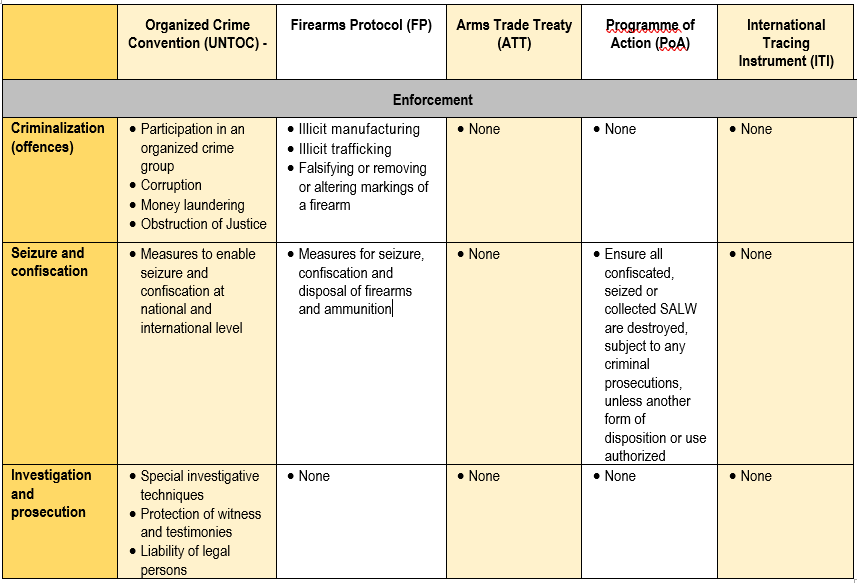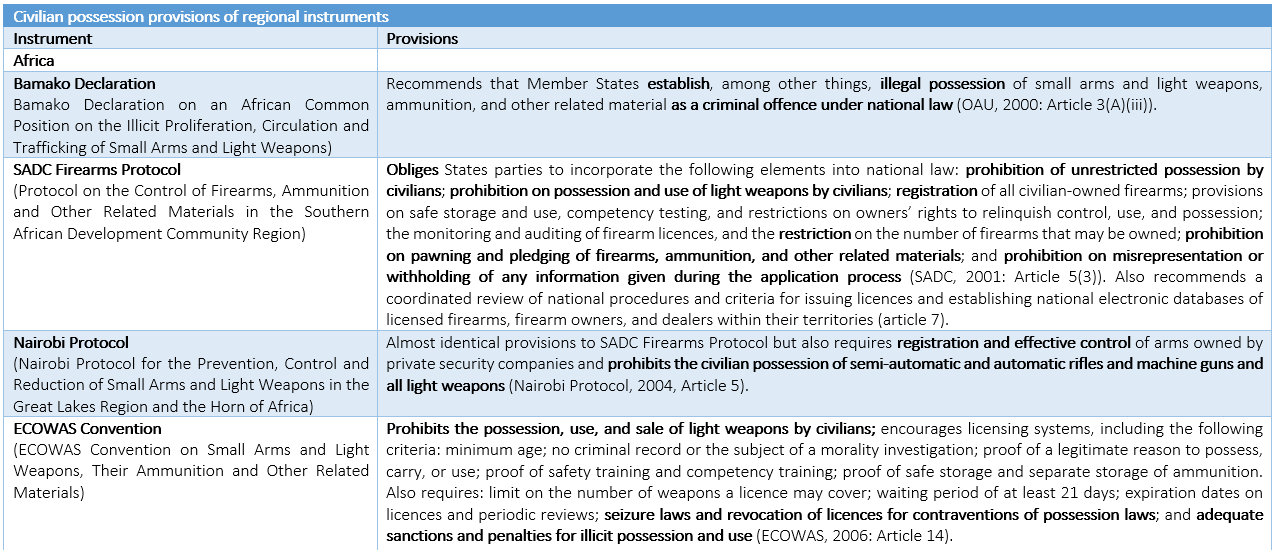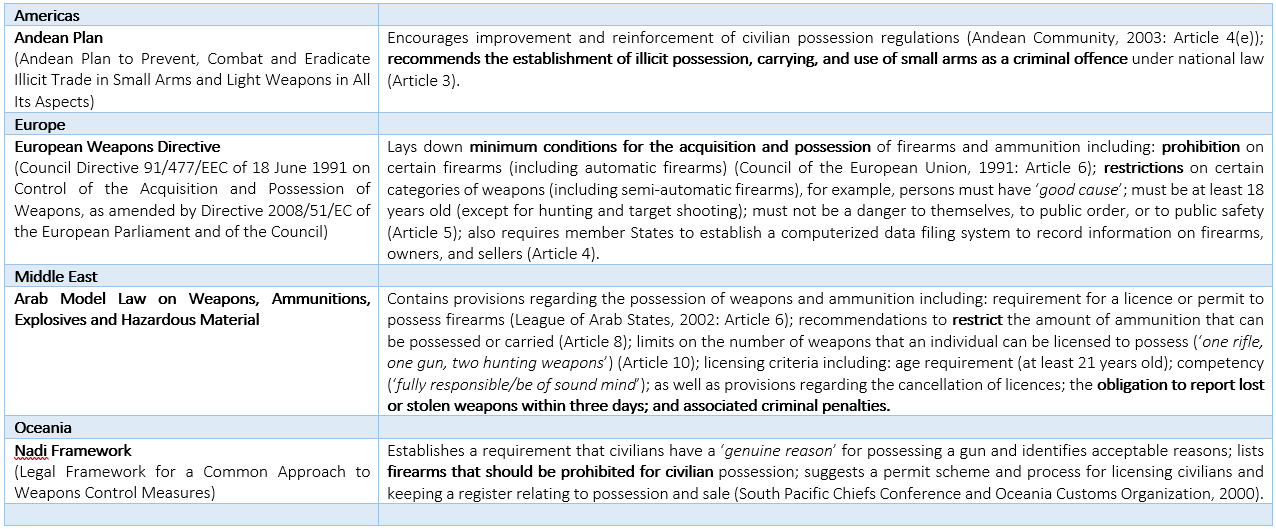Due to their lethal potential, most firearms are considered as ‘controlled items’. This means that their manufacture, transfer, movement, possession and use are subject to certain restrictions or state control through, for example, authorization or licensing systems. Modules 5 and 6 of the UNODC Teaching Module Series on Firearms addressed national and international efforts to control firearms, their parts and components, and ammunition throughout their entire life cycle and to regulate the activities surrounding those items and to some extent the persons engaged in them.
The overall aim of these norms is to regulate the legal activities surrounding the production, trade, movement and use of firearms, and to prevent and combat their illicit manufacturing, trafficking and misuse. While the scope of such norms can be more or less restrictive from country to country, in essence, all countries have some sort of national arms control regime in place that provides a minimum set of norms related to firearms, their parts and components, and ammunition.
The criminal justice response is the enforcement arm of such firearms control regime and establishes the legal consequences for non-compliance with the specific rules and requirements, as well as for the misuse of firearms in other crimes.
Depending on the legal system in place, national firearms control regimes will:
State response to the violation of the prescriptions contained in the firearms control regime can range from administrative sanctions, such as temporary or permanent suspension of licence or authorization up to the closure of an establishment, to civil and criminal sanctions, such as fines and deprivation of liberty, depending on the seriousness of the offence and the circumstances of the conduct.
There are varying regional and international legal systems and frameworks that attempt to address the issue of firearms. These form part of the ‘international legal regime on firearms’ and demonstrate the complex and multi-dimensional nature of the firearms problems (UNODC, 2018b). Module 5 explores in depth the International Legal Framework, whilst Module 6 looks at the National Regulations on Firearms. The United Nations Convention against Transnational Organized Crime (UNTOC), adopted by General Assembly resolution 55/25 in November 2000, and its supplementary Protocol Against the Illicit Manufacturing of and Trafficking in Firearms, Their Parts and Components and ammunition (Firearms Protocol), adopted by the General Assembly in May 2001, are legally binding instruments that establish the foundation of the criminal justice response in countering trafficking in firearms. As far as their enforcement measures are concerned, they require States parties to adopt measures and provisions at national level to ensure compliance with the regulatory regime contained in the instruments mainly through the prohibition of certain conducts, and encourage or invite States to enhance their cooperation and information exchange to this end. UNTOC and its supplementary Firearms Protocol focus specifically on the criminal justice responses to these problems. They require States parties to establish specific criminal offences aimed at criminalizing participation in an organized crime group and other related offences, as well as specific firearms offences, such as the illicit manufacturing of and trafficking in firearms, their parts and components, and ammunition inter alia. They also require States parties to adopt a set of other penal and procedural legal measures to strengthen the criminal justice response to these crimes and facilitate international cooperation in criminal matters in this field.
The Arms Trade Treaty, the Programme of Action on Small Arms, and the International Instrument to Enable States to Identify and Trace, in a Timely and Reliable Manner, Illicit Small Arms and Light Weapons are the other constituent elements of the international legal framework on firearms control (see Table 8.1 below). Each has in common partially overlapping and compatible objectives and purposes; that is they all tend to address arms diversion and trafficking from different, but complementary and mutually reinforcing perspectives of trade regulation and disarmament, and reduction of arms proliferation (UNODC, 2016).

At the regional level, there are at least eight agreements adopted by more than 110 countries that focus on firearms control. By varying degrees, these provide specific enforcement measures, especially regarding the illicit possession of arms, which features more prominently than in international instruments – see Table 8.2 below.


These agreements are intended to either set broad norms or standards, or be incorporated into participating States’ national law, ‘to guide the adoption of legislation meeting minimum requirements’ (Parker, 2011: 4).
The stages of the criminal justice response to firearms trafficking encompass four stages: